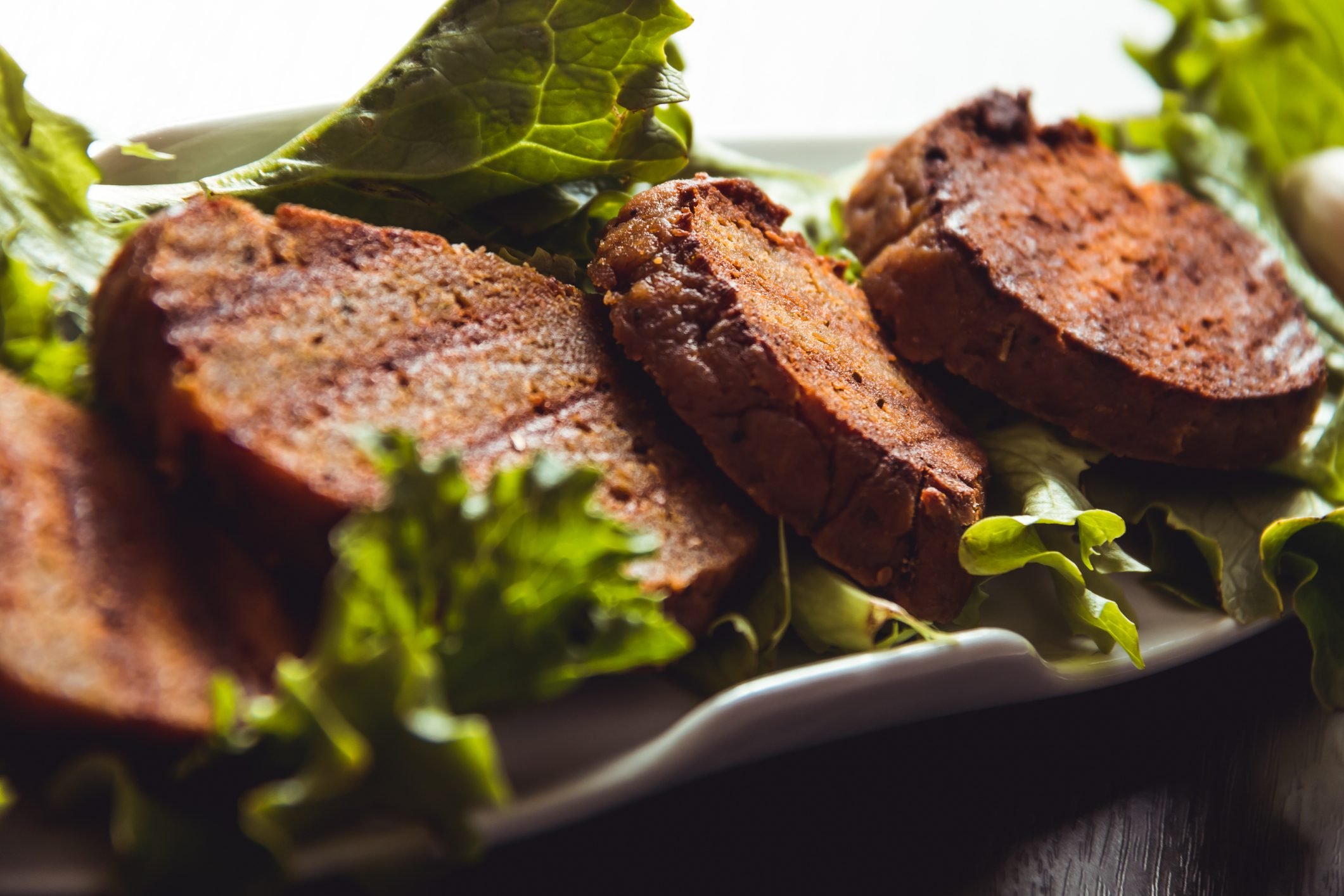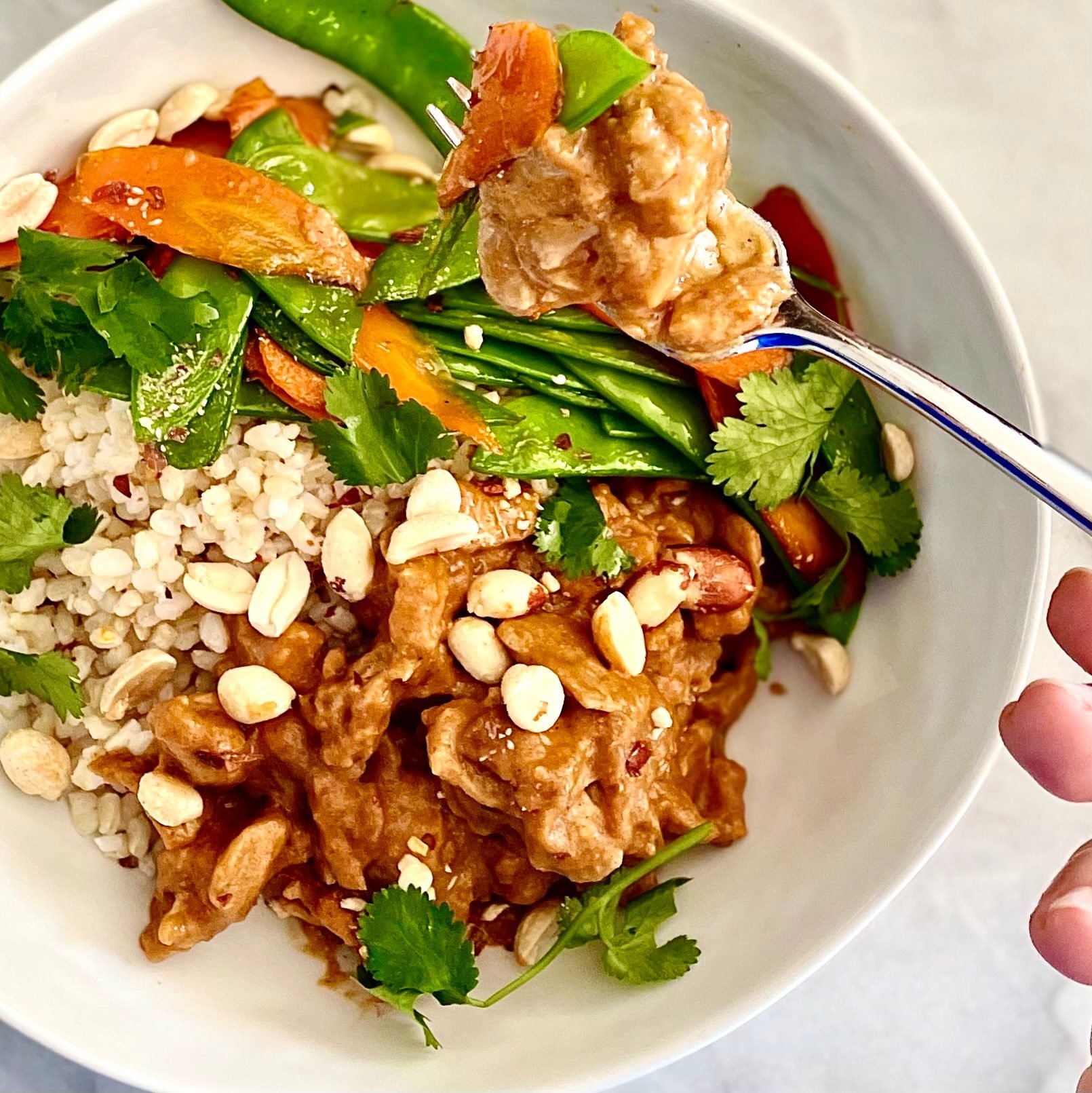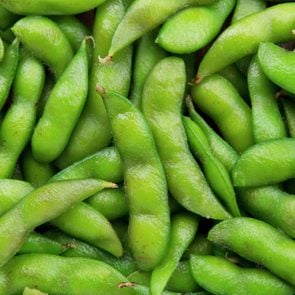Is Seitan Healthy? All About This Vegan Protein Alternative
Updated: Jun. 28, 2021
Seitan is a plant-based meat alternative with wheat gluten as its key ingredient. Here's the nutrition, benefits, risks, how to eat it, and a delicious recipe to try.
Our editors and experts handpick every product we feature. We may earn a commission from your purchases.
On This Page
What is seitan? The original plant-based “meat”
Though there are so many new-fangled plant-based “meats” on the market today, seitan, a vegan meat protein, has stood the test of time. In addition to its nicknames—wheat meat, wheat protein, wheat gluten, mock duck, and fu—seitan can claim another title: the original plant-based “meat.”
The wheat meat has ancient Asian roots. It’s said to have been discovered by Buddhist monks.
But it burst onto the food scene in the United States in the 1960s, when it was finally given its name, seitan, by the Japanese founder of the macrobiotic diet, George Ohsawa. Seitan has been on the market ever since, despite all of the other plant-based products stealing the media spotlight.
Some people may confuse seitan (pronounced “say-tan”) with tofu or tempeh since they all offer plant-based protein and can be enjoyed in place of animal protein. But tofu and tempeh are classically made from soybeans. Seitan is based on hydrated vital wheat gluten, which provides its distinctive chewy, meaty texture and neutral flavor.
And yes, seitan absolutely contains gluten. It’s made with wheat gluten, the naturally occurring protein in wheat.
Why seitan is trending
For years, nonvegetarians passed by seitan on store shelves. But these days, eaters of all types are swinging their carts around to give seitan a fresh new look. Its popularity is rising along with the demand for other vegan meat alternatives thanks to the attraction of plant-based eating.
According to vegan food market analysis published in 2019 by Grand View Research, seitan was anticipated to be the fastest-growing meat substitute product. And Market Watch’s Seitan Market 2021 Global Industry Research report finds that boosted demand for convenient food products is fueling demand for seitan and other ready-to-eat foods.
Other factors may contribute to seitan’s growing cuisine acceptance. “It resembles the texture of meat, and it’s higher in protein than many other plant-based foods,” says Natalie Rizzo, a New York City-based registered dietitian. “Plus, it’s inexpensive, easy to find, and versatile.”
What is in seitan?
Seitan can be made in your home kitchen or by manufacturers. In both cases, wheat flour is mixed with water and kneaded to separate out the starch. That process is repeated until only wheat protein remains. Then it’s cooked with herbs, spices, and other flavorings.
Since it’s a recipe, seitan is not always made the same exact way. Traditional seitan that you’ll find packaged and in your local market is typically made with water, vital wheat gluten, soy sauce, and garlic. Soy sauce provides sodium (saltiness) and umami (savoriness), both of which add to the flavor.
You might also find garbanzo bean flour, defatted soy flour, nutritional yeast, kombu (a sea vegetable), rice bran oil, rice vinegar, molasses, onion, ginger, and other seasonings included in traditional versions. Flavored varieties are available, too.

Seitan nutrition facts
Like meat, seitan is packed with protein and is a source of iron. Unlike meat, it has an insignificant source of saturated fat. It’s also relatively low in carbohydrates. And seitan provides all nine essential amino acids, those ever-important building blocks of protein.
Other nutrients may vary since seitan can be made in a variety of ways. But a typical 85-gram (3-ounce) serving of seitan from The Hain Celestial Group provides the following nutrients:
Calories: 120
Protein: 21 g (42 percent daily recommended value, or DV)
Total fat: 2 g (3 percent DV)
Total carbohydrate: 5 g (2 percent DV)
Dietary fiber: 1 g (4 percent DV)
Total sugars: 2 g
Calcium: 20 mg (2 percent DV)
Iron: 1.4 mg (8 percent DV)
Sodium: 380 mg (16 percent DV)
Cholesterol: 0 mg
Health benefits of seitan
There’s more to seitan’s impact on health than its nutrition profile. “Vegetarian sources of protein tend to be nutrient-dense, and this includes seitan,” says Amy Gorin, registered dietitian nutritionist and owner of Plant-Based Eats.
The fact that seitan doesn’t come from an animal is a distinct reason why it can be good for you. “It is completely plant-based, so it’s a great way to reduce red meat intake in the diet, which is linked with health and environmental benefits,” says Sharon Palmer, RDN, author of California Vegan.
Eating seitan can help assure that you’re getting adequate protein as you move towards a plant-based eating style. This way of eating comes with its own health benefits.
Following a vegetarian diet may help with weight loss, according to a 2017 study published in Nutrients. Plant-based eating also is linked with a reduced risk of chronic diseases such as heart disease, type 2 diabetes, and cancer, says Palmer.
(Here are the health benefits of a vegan diet.)
Risks or side effects
Despite its benefits, some caution is warranted when indulging in seitan. “Be mindful of the portion and sodium sizes if you eat a lot of seitan,” says Rizzo.
If you’re trying to minimize sodium in your diet, take into account the sodium content of the seitan you pick, especially flavored varieties. This doesn’t necessarily mean you need to avoid the food. You may just need to limit the added salt in meals that include seitan.
If you’re trying to steer clear of added sugars, check product labels before buying. Some brands may add molasses and white sugar.
Of course, there’s the gluten, too. “Seitan is based purely on wheat—it is essentially the wheat protein or gluten, so it is not appropriate for those consuming gluten-free diets,” says Palmer.
And what about seitan when dining out or ordering takeout? “Oftentimes seitan served at restaurants is fried, meaning that these versions should only occasionally be consumed because this makes it higher in both calories and fat,” says Gorin.
(Can’t have gluten? Try millet instead.)
Who should consider seitan
While seitan fits nicely into any vegan or vegetarian eating plan, it’s so versatile and protein-packed that there are a few other groups that might want to consider this meat substitute.
Seitan for plant-based athletes
“There is some debate as to whether plant-based athletes need to eat more protein, since animal protein sources might be better absorbed by the body,” says Rizzo. “Because of this, it’s crucial for vegan and vegetarian athletes to take in quality protein sources, like seitan, to recover after a workout.”
Rizzo highly recommends that plant-based athletes include foods like seitan in their post-workout meals or in their dinners to help them meet their protein needs throughout the day.
(Also, try these plant-based protein sources.)
Seitan for nonvegetarians
While seitan is a plant-based alternative to meat and can be a go-to pick for plant-based eaters of all types, you don’t need to be a vegetarian or vegan to enjoy it. Steak and seitan can coexist in one diet. You can even combine the two, mixing meat with seitan.
A 2020 study in Current Research in Food Science found that mixed products, such as a burger made with half beef and half seitan, may be a well-received option for those who want to reduce meat intake, especially if they’re not ready to fully commit to plant-based eating.
How to shop for seitan
Seitan is convenient in packaged form. It’s sold in a variety of forms, from strips and chunks to slices and crumbles. Which you use depends on what you plan to make (more on that later).
“It takes on the flavor of the dishes, or the broth it is prepared in,” says Palmer. So consider purchasing it when you want a stand-in for meat in stews, tacos, and pasta dishes. After preparation, it really does look just like meat.
Are you a fan of big flavors? You’re in luck. You can also buy globally-inspired seitan, such as Mexican-, Chinese-, and Italian-style flavors, as well as seitan that’s transformed into other meat alternatives, like “chorizo” or “bacon” seitan.
These options make plant-based eating easier and more inventive than ever. Savor “chorizo” seitan in a breakfast scramble, on nachos, and over rice. Or sink your teeth into “bacon” seitan in a BLT sandwich and as a pizza topping.
How to eat seitan
If you don’t have celiac disease, gluten intolerance, or gluten sensitivity, you can plan to enjoy a serving of seitan every day as a major protein source. But since it’s advisable to choose a variety of foods, ideally consider enjoying seitan a few times a week rather than daily for more nutrient diversity in your diet.
There is no single best way to eat this plant-based “meat.” You’ll often find seitan prepared in Asian-style dishes. But traditional seitan is mild, making it highly versatile for easily incorporating into a myriad of recipes.
Using packaged seitan is practically a no-brainer since it’s already fully prepared; you just need to grill, sauté, steam, stir-fry, or pan-fry it until it’s heated through. You can usually swap seitan for meat or poultry in a recipe—just cut a few minutes off the total cooking time. In other words, heat up the seitan in a skillet, combine with a sauce like barbecue or teriyaki, and eat.
Just be sure to choose the form of seitan that best matches what you plan to do with it. Use seitan strips or chunks for stir-fries, slices for sandwiches, and grounds or crumbles for tacos.
Seitan serving tips
“I like that seitan is pretty easy to prepare right out of the package,” says Rizzo, who either tosses it into a stir-fry or taco or enjoys it ground up to make a plant-based burger.
“I like to eat seitan in recipes, such as stir-fries, noodle dishes, and veggie pot pies,” adds Palmer. ”
Seitan is really delicious prepared in a wok with some teriyaki sauce, water chestnuts, baby corn, onions, mushrooms, and brown rice,” says Gorin. “You can also put seitan pieces on a skewer and pair with a peanut sauce for a delicious appetizer.”
Palmer adds that she thoroughly appreciates seitan’s old-school plant-based vibe, too. In her childhood home, homemade seitan was paired with gravy and served over noodles or mashed potatoes in a sort of country, homespun way. She also reminisces about seitan prepared with carrots and peas as a thick stew served over grains. “It has a comfort food sensibility about it that way,” says Palmer.
Seitan recipes
While picking up packaged seitan is so convenient, you can make it yourself if you’re a fan of cooking—or need a cool new cooking project. “It’s not that hard,” says Palmer, who makes her own brothy homemade seitan. Give Palmer’s recipe for Best Homemade Seitan a go. Or try one of her other seitan recipes:
I hope you’ll make my easy, stir-fry-inspired recipe for Simple Spicy Peanut Seitan, which uses traditional packaged seitan.
Simple Spicy Peanut Seitan

Preparing packaged seitan with a flavorful sauce and serving it in a bowl with rice and vegetables is a delicious way to include it in a plant-forward eating plan. Try this easy, nutty recipe to add 18 grams of plant protein to your day.
Makes 3 servings, about 2/3 cup each
Ingredients
1 cup low-sodium vegetable broth
2 tablespoons bottled gochujang sauce
2 tablespoons no-salt-added creamy peanut butter
1 1/2 teaspoons grated fresh ginger root
1 teaspoon tamari (soy sauce) or coconut aminos
Pinch of dried red pepper flakes
1 tablespoon sunflower or avocado oil
1 (8-ounce) package traditional seitan strips/pieces
1 1/2 tablespoons organic cornstarch
Instructions:
- In a small saucepan over high heat, add the broth, gochujang, peanut butter, ginger, tamari, and red pepper flakes and bring to a boil. Reduce heat to low and simmer until sauce is smooth and flavors are well developed, about 5 minutes.
- Meanwhile, fully heat the oil in a cast iron or other stick-resistant skillet over medium-high. In a bowl, toss seitan with the cornstarch, then add to the skillet. Sauté until seitan is heated through and lightly browned, about 2 minutes.
- Add the simmering sauce to the seitan in the hot skillet, remove from heat, and stir until the sauce reaches your desired thickness and coats the seitan, about 30 seconds.
- Serve as desired, such as with brown rice, sautéed veggies, peanuts, and fresh cilantro.
Per serving (peanutty seitan only): 230 calories, 11 g total fat, 1.5 g saturated fat, 0 g trans fat, 0 mg cholesterol, 840 mg sodium, 19 g total carbohydrate, 2 g dietary fiber, 6 g total sugars (including 1 g added sugars), 18 g protein























